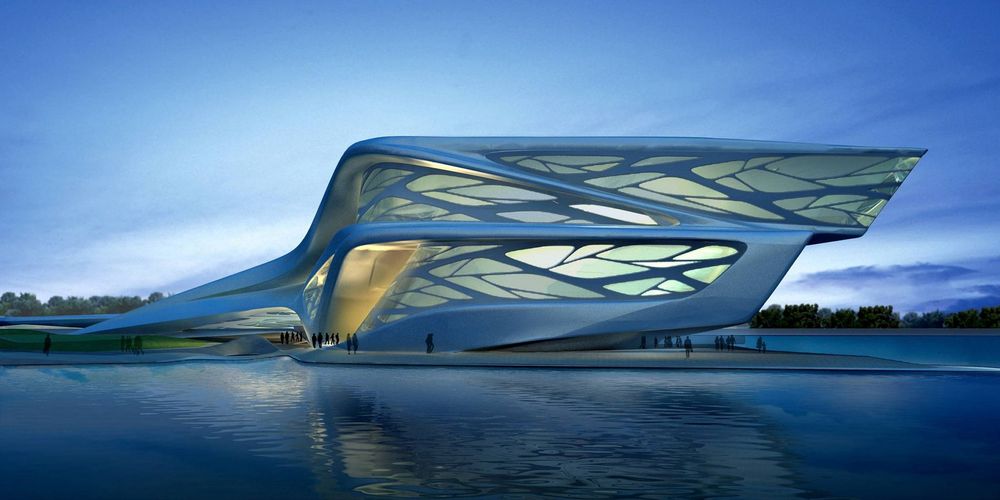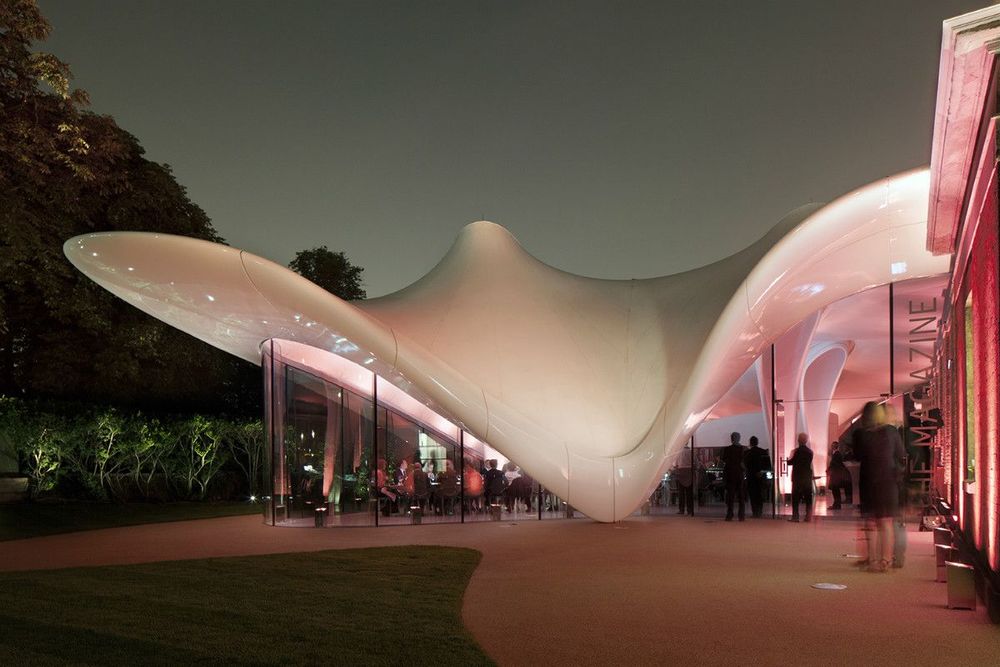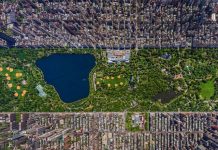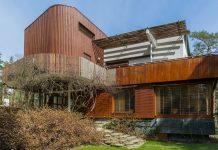When noticing the complex presentation of Hadid’s works from the early 1980s to mid-1990s, anyone might face a difficulty to understand her way of thinking and the way of design. But only through doing a content analysis of her interviews, one could derive a precious primary data that leads to draw her strategy of design.
Hadid considers design as an operation involving concept, rationality, and approaches that inspect as well as arrange the intricacies of modern life patterns (Hadid, 2011; Didero, 2012). Design process from her perspective is a continuous procedure of self-investigation in design through its entire stages (New Yooxer, 2010). The sequential steps of Hadid’s strategy of design are arranged according to her statements and declarations.
It takes this way of processes arrangement; however, it often happens that in one of the last three stages a modification might be done to meet project’s requirements affecting the general design of the project. Hadid strategy could be summarized into five stages; they are personal investigation, form notion, form creation; circulation and functions, and finally interior design. Each stage may affect the final conceivable form of the project where Hadid is exceptional.
Personal Investigation And The Journey
Rigorous research is the first step done by Hadid in project’s site, nature, environment, neighborhoods, function, urbanism, architecture, the political and the social events which shape city’s history (Designboom, 2007). Furthermore, she even studies people’s ambition about the future of their area (Hadid, 2005). The purpose of this stage is to have a comprehensive knowledge about project’s nature and parameters which contributed in generating an efficient and interactive model with the conditions of the surroundings.
These variables also underlie the variety and differences of her designs because every site affords something exceptional to a project (NewYooxer, 2010). Hadid referred the success of her projects to the demanding research in all of project’s aspects. When her office won the competition for designing Japan National Stadium in 2012, she declared that the design winning is a result of the ‘three decades of research into Japanese architecture and urbanism’ (Frearson, 2012, para.3). Therefore, long term site and project investigation is considered as the first key step in her unique and unfamiliar journey with design.
Form Notion
‘My ideas come from observation: of the site, of nature, of people moving in the city’ (NewYooxer, 2010, para. 2)
After an intensive self-research on everything related to the site and project, form notion comes up to her which is often related to site’s variables. She designs many alternatives and models for one project but only that smart option is going to be displayed; the one which has the best notion and will serve the project from many aspects (Designboom, 2007).
Through doing a content analysis of projects’ form notions described by Hadid, it is concluded that Hadid’s inspiration of ideas could be confined into five areas that are site, art, nature, architecture, computing programs. The roots of each one are addressed accompanied with mentioning the underlying intellectual and social drivers of innovation.
Site
In addition to what is previously mentioned in phase 3.1, site’s landscaping, topography, skyline, location within city, circulation, orientation, and land form, all of these could be a rich environment for inspiring ideas. They are also stimulating design clues to make a project an integral part of the site. An example of a project that Hadid inspired its configuration from the external lines of the site form is Regium Waterfront, multi-functional building in Reggio, Italy where some of the form’s determinants are exploiting the land for built as much as possible and making the largest area of the building overlooking the sea.
Nature
Hadid’s deep meditation and observation in nature especially what is related to project’s site helps her largely to elicit ideas (Association of Novi Sad Architects, 2011). All of us enjoy nature, however; Hadid diligently searches for the sources of thing’s beauty and aesthetics prompted by her curiosity. She refers the splendid scenery of the mountains to the difference of their forms that offers a light manipulation falling on them (Hattenstone, 2003).
She works with this inference as a technique to create new forms by manipulating masses’ shapes under daylight. Recently, Hadid has inspired from the coherence and beauty of organic forms in nature, their systems as well as their adaptation with environment and applied them in her designs (Hadid, 2011); a significant percentage of her projects fall under this type. Examples for the natural forms Hadid inspired from to generate some projects’ designs are topographic contours, dunes, sedimentology, sea creatures, and living organisms.
Art
In the fourth and fifth years for Hadid at Architectural Association, students were allowed to choose their desiring trend where she had taken art as an inspiring medium and as a starting point for her radical thoughts (Gopnik, 2011). Hadid early works till mid 1990s were influenced by suprematism established by Kasimir Malevich; the art of geometrical abstraction which cannot be understood easily. Applying such thoughts resulted on liberating architecture from its entrenched rules and creating new, abstract forms.
On the other side, as a Muslim Arab, Hadid well-known curvy lines which have the same cruise of Arabic calligraphy and the ornament floral patterns of Islamic art, have qualified her to produce her especial architectural imprint; that is fluid space and architecture (Aref, 2011; Yentob, 2013). Her trip to China has significantly left its effects in her designs where she learned Chinese’ traditional painting and their way of painting layers space into infinity giving the sense of endless freedom.
Moreover, she learned the way architecture and gardens harmonically intervene with nature which qualified and developed her skills of landscaping (Hadid, 2011). She also has inspired from the artistic works of the suprematist sculptor Naum Gabo and the painter lászló Moholy-Nagy in both designing fluid architecture and furniture (Hadid, 2006).
Architecture
As the thoughts of constructivist architecture were inspired from the abstract artistic movements of the early 1920s, few of Hadid early works were visibly influenced by some works of the Russian constructivist architect Yakov Chernikhov. She did not influenced his way of imitating machine’s design but his way of creating dynamic and energetic forms. Hadid declared that her works is developed out of some early modernist architects such as Frank Lloyd Wright, Oscar Niemeyer, and Mies van der Rohe from whom she learned how to break free from the ground by elevating the building (Hadid, 2006).
She also referred to the effective role of Chinese traditional Architecture in her conceptual vision of conceiving architecture as a natural part of the surrounding by using the technique of embedded-ness or fitness. Travelling to many countries around the world has played main role in enhancing her imagination as well as her design’s abilities through experiencing different kinds of international architecture which interprets the familiarity of her architecture at the global level.
Digital Design Programs
In addition to being a tool for designing architectural plans, digital architectural design programs are lately used by Hadid as inspiring tools for generating unique forms. The recent advancement in computing sector has facilitated many things for architects such as conceiving and generating complex forms and qualifying them to become real projects. Parametric design system is the architectural program established and used intensively by Zaha Hadid architects for design.
It helps architects to be more responsive to the complexities of contemporary life and environment (Schumacher, 2010). In addition, it gives the architect the freedom of creating new forms because it has the feature of liberating form by making it supple and malleable resulted in producing numerous alternatives for one project. The form in this program is a result of an interactive operation between two factors: the first one is the comprehensive data of the project and the second is the aesthetic sense of the architect creating architecture characterized by adaptivity, communication, and dynamism (Schumacher, 2009). Example of this type for inspiring ideas is Sunrise Tower in Kuala Lumpur, Malaysia (2009).
When Hadid is settled with the form notion, she starts to embody it in her design with applying some techniques creating new configuration for a project which requires a sense of imagination. She encouraged her students to get through the unknown place; place of invention, imagination and discoveries (AbitareWeb, 2011). It is to forget the barriers created by convention and society and stop accepting conceiving things as they are. Hadid claimed that architecture is similar to science in its need to lab research to get and discover the cures (Hadid, 2005).
She also declared that if some things had not been excavated and uncovered, it will not be discovered, it will stay buried (Belogolovsky, 2008). Such a critical thinking by Hadid is an attempt to receive the architecture from new angle that reflects the nature of this era and our life. Going into this adventurous journey has qualified her to be one of the best women architects in the world, if not the best one ever (Giovannini, 1996; Yentob, 2013)






















